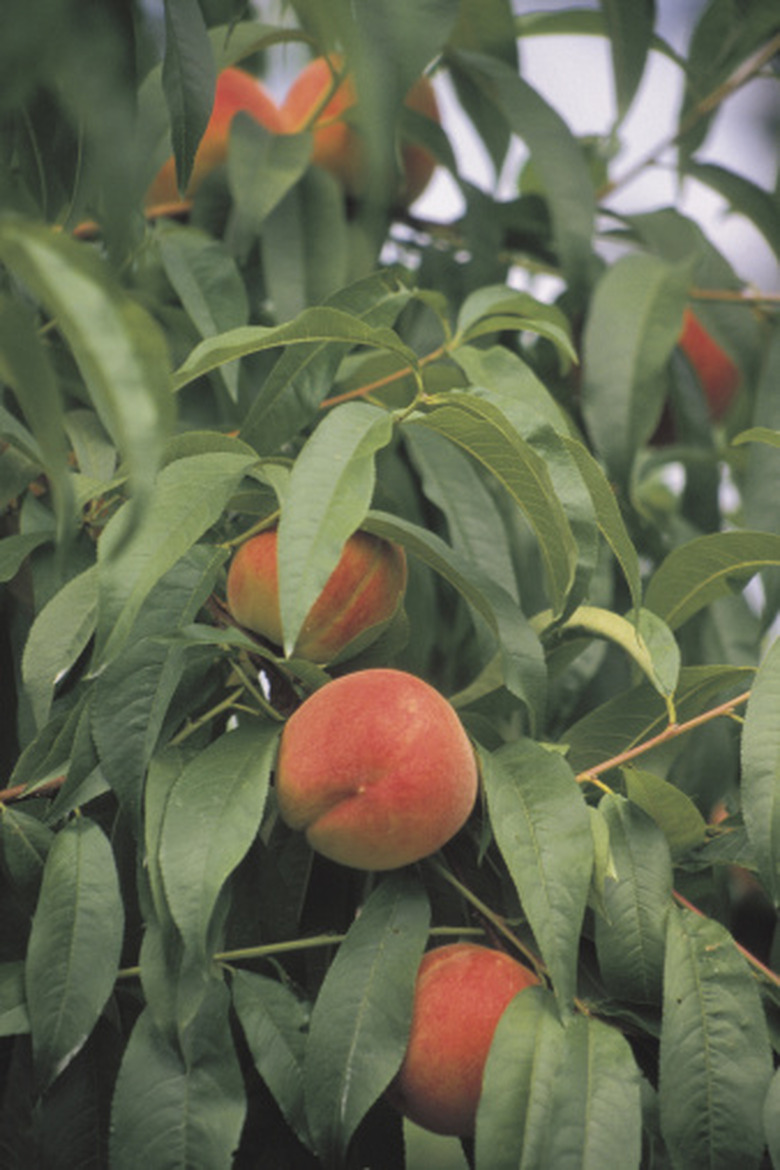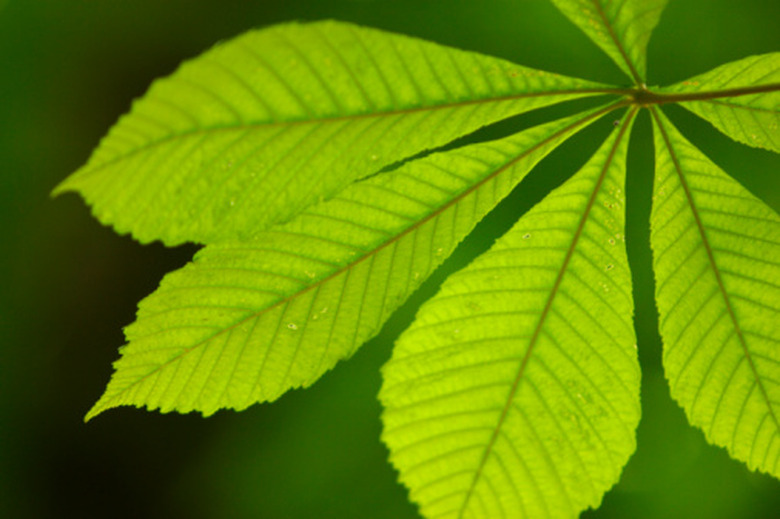Which Tree Leaves Are Poisonous For Dogs?
Because dogs are omnivores, it is not uncommon to see them nibbling at grass and plants. If your dog is a constant nibbler, then you should avoid planting trees poisonous to dogs or plan on keeping your dog away from these trees. If you fear your dog has ingested the leaves of a poisonous tree, contact your veterinarian immediately. You can also call the ASPCA Animal Poison Control Center at 888-426-4435.
Fruit Trees
Fruit Trees
A number of fruit trees contain cyanogenic glycosides. These chemicals can cause vomiting, diarrhea, low blood oxygen, brick red mucous membranes, dilated pupils, panting, decreased heart rate, seizures, respiratory congestion, shock and coma. The leaves are more toxic when they are in the process of wilting. A large amount needs to be ingested in order to cause respiratory failure and death. Fruit trees that contain cyanogenic glycosides are members of the Prunus genus or the Malus genus, including apple, crabapple, cherry, peach, apricot, almond and plum trees.
Avocado
Avocado
Avocado trees (Persea Americana) contain the toxin persin. Persin mainly causes gastrointestinal upset in dogs, such as vomiting and diarrhea. However, it can also cause respiratory distress, congestion, fluid accumulation around the heart and even death.
Coffee Tree and Horse Chestnut
Coffee Tree and Horse Chestnut
The coffee tree (Polyscias guilfoylei) and horse chestnut (Aesculus glabra) both contain saponin. Saponin can cause vomiting, diarrhea and depression of the central nervous system. The horse chestnut, or buckeye, contains a glycosidic saponin, Aesculin, along with other saponins. In addition to the previous symptoms, it can also cause excitement, dilated pupils, convulsions and even coma.
Yews
Yews
Yews (Taxus spp) contain several toxins that are dangerous when ingested by dogs including volatile oil and taxine A and B. The first signs of toxicity include muscle tremors, dyspnea, which is shortness of breath, and seizures. It can also cause vomiting and lead to sudden death from acute heart failure.
Pine Trees
Pine Trees
Buddist pine (Podocarpus macrophylla) has an unknown toxin that can cause severe vomiting and diarrhea. It is also called the yew pine, Japanese yew and the southern yew, but should not be confused with yews belonging to the genus Taxus, which are also toxic. The Norfolk Island pine (Araucaria heterophylla) is also toxic and can cause vomiting and depression. It is also called the house pine, the Australian pine and the Norfolk pine.
Chinaberry Tree
Chinaberry Tree
The chinaberry tree (Melia azedarach) contains the meliatoxin Tetranortriterpenes. It can cause vomiting, diarrhea, depression, weakness, slow heart rate, seizures and shock. Ripe berries are the most toxic, but the leaves, bark and flowers are also dangerous. The chinaberry tree is also known as the bead tree, China ball tree, Persian lilac, white cedar and a number of other names.
Schefflera, Angelica Tree and Ficus
Schefflera, Angelica Tree and Ficus
The schefflera (Schefflera actinophylla or Brassaia actinophylla) is also known as the umbrella tree, the Australian ivy palm and the octopus tree. It contains calcium oxalate crystals, which irritate oral tissues. It can cause intense burning and irritation of the mouth, nose and lips, drooling, difficulty swallowing and vomiting. The Angelica tree (Aralia spinosa) and the ficus (Ficus benjamina) contain different toxins but have very similar symptoms. Ingestion of either can cause skin and oral irritation, hypersalivation, diarrhea and vomiting. The Angelica tree contains the toxin araliin and is also known as the devil's walking stick, prickly ash and prickly elder. Ficus contains a proteolytic enzyme and psoralen and is known as the weeping fig or the Indian rubber plant
Macadamia Nut
Macadamia Nut
The macadamia nut (Macadamia integrifolia or M. tetraphylla) is also known as the Queensland nut and the Australian nut. It contains an unknown toxin that can cause vomiting, overheating, muscular stiffness or weakness, tremors, increased heart rate and depression.



